NEBALA: Live at the Blót

(english version below)
NEBALA veröffentlichen heute die komplette Show vom Midgardsblót-Festival
NEBALA haben heute „Nebala – Live at the Blót“ veröffentlicht. In den letzten Wochen wurden bereits erste Videos herausgebracht. Darüber habe ich bereits berichtet (z.B. HIER) . Daher stelle ich heute die letzten noch fehlenden Lieder vor. „Ant Mér Sjalfri Þér“, „Surgō Sebō“ und „Blotha Huñaga Bolañan Alu“ sind auch die letzten Lieder ihrer Show auf dem Midgardsblot-Festival. Das Album „Nebala – Live at the Blót“ ist bereits am 21. April 2023 auf allen Streamingplattformen veröffentlicht worden.
NEBALA ist das Projekt von Jonas Lorentzen, der bis 2019 Vocalist bei HEILUNG war. Aus der Zusammenarbeit mit Sebastian Gainsborough („Vessel“, The Northman) und Kjell Braaten (WARDRUNA, ORIGAMI GALAKTIKA) entstanden die EP „Lustuz“ (2020). Eigentlich sollte das Debütalbum im gleichen Jahr erscheinen, was aber pandemiebedingt nicht möglich war. So wurde die Zeit genutzt, um weiter am Konzept und der Musik zu arbeiten. Das 2022 erschienene Album „Lustuz Laþu Wōþuz Alu“ wurde von Kjell Braaten aufgenommen, gemischt und produziert. „Nebala – Live at the Blót“ hat Fieke van den Hurk aufgenommen. Kjell Braaten hat Mixing und Produktion übernommen und Iver Sandøy (ENSLAVED) hat das Ganze gemastert.
NEBALA – Live
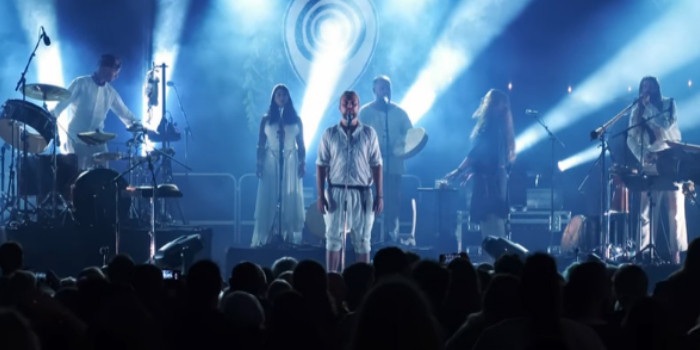
Das Midgardsblot Open-Air Festival findet seit 2015 in Borre in Norwegen statt. und präsentiert dem Publikum Bands aus Metal, Folk und Dark Ambient. 2022 haben dort u.a. WARDRUNA, ROTTING CHRIST, HEILUNG, PRIMORDIAL, EINHERJER, GAERA und NYTT LAND gespielt.
NEBALA haben dort, wie die Videos zeigen, eine einzigartige Show abgeliefert. Die Aufnahmen wurden von Sara Bøgh künstlerisch bearbeitet. Daher sind die Videos nicht nur eine Dokumentation der Show, sondern ein Medium, das die Wirkung der Lieder durch fantastische Bilder verstärkt.
Musik muss man live erleben. Sie ist wie jemand, der dir in die Augen schaut und dir mit seinem ganzen Wesen sagt, dass er dich liebt. Oder eine herzliche, warme Umarmung von einem Freund in einer Zeit, in der das alles war, was man brauchte. Das war’s! In einem einzigen zerbrechlichen Moment der Ewigkeit, und er wird nie wieder kommen oder auf dieselbe Weise erlebt werden.
Jonas Lorentzen
NEBALA haben mit ihrer Musik und zuletzt auch mit den Videos etwas Ungewöhnliches und Neues entwickelt. Musikalisch ist es eine einzigartige Verbindung traditioneller Instrumente, archaischer Klänge, außergewöhnlicher rhythmischer Strukturen und experimenteller Elemente.
Urnordisch und Verse aus der Edda
Verse und Geschichten aus der Hávamál, Skirnismál und von Runensteinen sind die Grundlage der Texte der Lieder. Sie erzählen von Sehnsucht und Schmerz sowie von Zuversicht, Vertrauen, Verwandlungen und Übergängen. Während die Lieder der Edda in Altnordisch geschrieben wurden, ist Jonas Lorentzen (in Zusammenarbeit mit Dr. Mathias Nordvig) mit der Verwendung des Ur-Nordischen zeitlich noch einen Schritt zurück gegangen, um eine Art spiritueller Sprache zu schaffen. Alte Sprachen wurden immer schon für Riten verwendet. Dadurch, dass die Wörter nicht in einem alltäglichen oder profanen Zusammenhang verwendet werden, behalten sie eine ursprüngliche Bedeutung.
„Ant mér sjálfri þér“, „Surgō Sebō“ und „Blotha Huñaga Bolañan Alu“ – die neuen Videos
Liebe mich wie dich selbst
„Ant mér sjálfri þér“ hat für mich musikalisch wie thematisch das Zentrum des Albums „Lustuz Laþu Wōþuz Alu“ dargestellt. Musikalisch in der Verbindung elementarer, archaischer Klänge mit avantgardistischen, experimentellen Elementen. Und durch die Frage: Was braucht es, damit es möglich wird, sich selbst mit seinen hellen und dunklen Seiten annehmen und dem anderen ohne Maske eigen zu können?
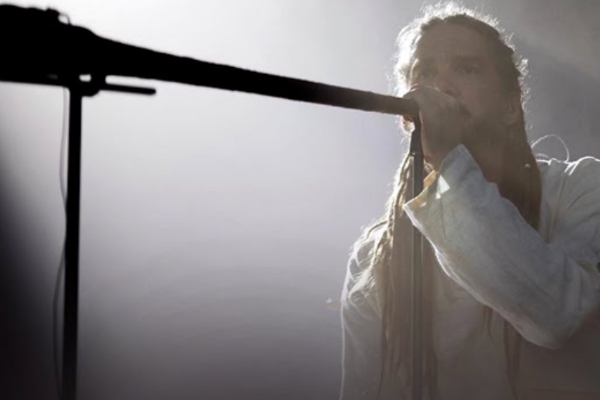
In der Show folgt es auf „Laþu“. (Zu diesen beiden Liedern gab es bereits zwei ganz besondere Videos, die zeigen, welche Verbindung es zwischen den beiden Liedern gibt ! ) Daher ist es schlüssig, dass „Ant mér sjálfri þér“ an dieser Stelle kommt. Auch in der Show ist dieses Lied für mich das Zentrum, auf das die vorherigen Lieder musikalisch und inhaltlich zuströmen.
Die Bühne ist in pulsierenden Nebel getaucht. Der Klang der Lure leitet das Lied ein. Dann bauen NEBALA einen mehrstimmigen Gesang auf, der an Rituale und Liturgie erinnert. Die Beleuchung verstärkt diesen Eindruck. Der folgende Sprechgesang ist Selbstgespräch und Auseinandersetzung: nachdenklich, verunsichert, fragend, anklagend, flehend: „Ant Mér Sjalfri Þér“. Unheimliche anschwellende Klänge wie in einem bösen Traum, mit Geistern der eigenen unguten Handlungen und Gedanken. Verstärkt wird dies dadurch, dass die Bilder von pulsierenden Strukturen überzogen werden. Und dann vertreibt Josh sie mit archaischer Energie. Es ist wie ein Kampf mit dunklen Elementen. Auch diese Auseinandersetzung mündet in den Ruf: „Ant Mér Sjalfri Þér“.Er ist hier Forderung, Bedingungen und verzweifelte Sehnsucht zugleich. Die Anspannung wird über das gesamte Lieder immer größer und entlädt sich in einem überwältigenden Schluss.
Ragnarök is coming – they say. How about we’ll have a fucking good time
„Surgō Sebō“ – Worte und Körperlichkeit
„Surgō Sebō“ ist wie eine Befreiung nach der vorangegangenen bedrückenden Verzweiflung und Anspannung.
Es ist ein großartiges Stück! Denn seine komplexen rhythmischen Strukturen, die mit ihren Schwingungen den ganzen Körper erreichen, bringen den Zuhörer unweigerlich in Bewegung. Man kann das Publikum nicht sehen, aber so weit ich es mitbekommen habe, waren alle in Bewegung. Ich konnte jedenfalls nicht stillstehen. Bei „Surgō Sebō“ fügen sich Erleben und Sein in Klang und Rhythmus zusammen und es entsteht eine energetische und bewegungsreiche Performance, bei der alle auf der Bühne in Bewegung sind. Josh tanzt mit breiten und ausdrucksstarken Bewegungen, die den Grundrhythmus aufnehmen, während die anderen in ihren Bewegungen den Rhythmus variieren. Der Tanz ergänzt Melodie, Rhythmus und Wörter zu einer Ganzheitlichkeit, die körperlich spürbar ist.
Jonas singt mit tiefer und voller Stimme. Stimmliche Möglichkeiten werden ausgelotet (immerhin haben sie fünf tolle Sänger auf der Bühne) und die Rufe klingen wie eine Befreiung. Die Lautmalereien und Wörter bilden den Rhythmus. Auch wenn man die Wörter vielleicht nicht versteht, entfalten sie ihre Wirkung und Macht.
Die Performance auf der Bühne wechselt zwischen wilden, rohen und feinen harmonischen Momenten, was zu einem beeindruckenden Spannungsaufbau und -abbau führt. Insbesondere dann, wenn die Stimmen aufeinander aufbauend die Klänge erweitern und dann wieder harmonisch zusammenfügen. Oder auch im Dialog „Surgō – Sebō“ zwischen Jonas und Josh.
Vom Menschen zum Kosmos mit magischen Worten
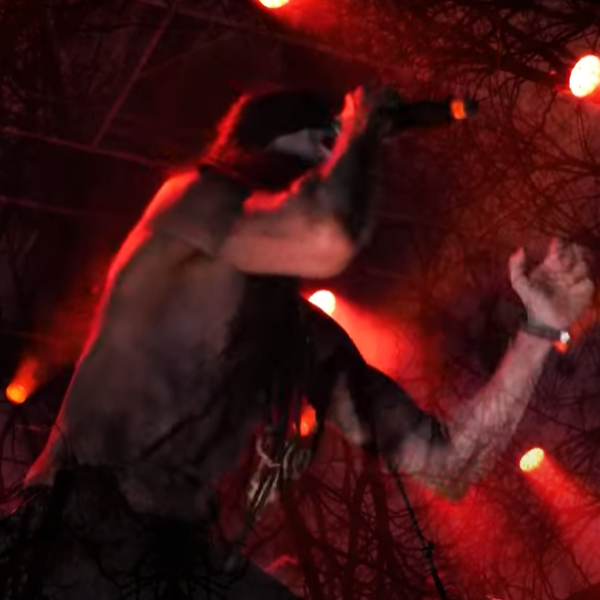
Nachdem „Surgō Sebō“ Emotion, Körper und Geist wieder miteinander verschmolzen hat, werden bei „Blotha Huñaga Bolañan Alu“ Zeit und Kosmos einbezogen. Daher ist „Blotha Huñaga Bolañan Alu“ ein fantastischer Abschluss für die Show.
Durch die ruhige Eröffnung entsteht eine andächtige Stimmung. Nach und nach verbinden sich die rhythmischen und klanglichen Strukturen zu einem ekstatischen Ganzen. Der rituelle Gesang mit Namen uralter Göttinnen und Wörtern, die in der nordischen Mythologie als magisch gelten, verstärken diesen Eindruck. Dieses Lied fasst die Ideen und Gedanken der vorangegangenen Lieder zusammen: die Auseinandersetzung mit sich selbst, mit der ‚spirituellen‘ Verbindung von Schöpfung und Sexualität als Grundlage für Inspiration und Kreativität.
Der Text besteht aus den als magisch verstandenen Wörtern Fuþark, Alu, Laukaz, Laþu, Ehwuz, Wōþurīþaz und den Namen alter Göttinnen: Alusnehija, Fala, Fakinehija und Frīagābis.
Allein dadurch, wie Josh Rood mit tiefer (und schwarz-metallischer) Stimme diese Wörter singt und dies dann von Ilaria Orefices heller Stimme aufgenommen wird, schafft magische, beschwörende Momente. Und wenn sich dann die Klänge der Percussion verdichten, sich mit dem beschwörenden Flüstern und Rufen verbinden, spürt man die Mächtigkeit dieses Liedes noch einmal ganz besonders.
Magie und großartige Musik
Die Lieder so wie die gesamte Show sind fesselnd, magisch und sowohl geerdet wie auch spirituell. Denn die Musik und die Klänge sind eindringlich und kraftvoll. Die sowohl elementaren wie auch komplexen und experimentellen rhythmischen und klanglichen Strukturen sind wunderbar miteinander verwoben. So entstehen mystische, unheimliche und harmonische, beruhigende Momente. Und sie bieten die Möglichkeit, sich den eigenen hellen und dunklen Anteilen zu nähern, sowie den Sehnsüchten und der Schönheit von Ekstase.
Die Musik von NEBALA ist ungewöhnlich, neu, befremdlich aber auch bekannt und wunderschön. Und immer mit einer unglaublichen Intensität und Kraft.
Das hat wohl auch das Publikum so erlebt. Denn es spendet begeisterten Applaus.
Und jetzt nehmt euch Zeit für die komplette Show und lasst euch von NEBALA in eine wunderbare Klangwelt entführen.
NEBALA release the complete show from the Midgardsblót festival today.
NEBALA have released „Nebala – Live at the Blót“ today. The first videos have already been released in the last few weeks. I have already reported about that (e.g. HERE) . So today I present the last missing songs. „Ant Mér Sjalfri Þér“, „Surgō Sebō“ and „Blotha Huñaga Bolañan Alu“ are also the last songs of their show at the Midgardsblot Festival. The album „Nebala – Live at the Blót“ has already been released on all streaming platforms on 21 April 2023.
NEBALA is the project of Jonas Lorentzen, who was the vocalist for HEILUNG until 2019. The collaboration with Sebastian Gainsborough („Vessel“, The Northman) and Kjell Braaten (WARDRUNA, ORIGAMI GALAKTIKA) resulted in the EP „Lustuz“ (2020). Actually, the debut album was supposed to be released in the same year, but this was not possible due to the pandemic. So the time was used to continue working on the concept and the music. The album „Lustuz Laþu Wōþuz Alu“, released in 2022, was recorded, mixed and produced by Kjell Braaten. „Nebala – Live at the Blót“ was recorded by Fieke van den Hurk. Kjell Braaten did the mixing and production and Iver Sandøy (ENSLAVED) mastered the whole thing.
NEBALA – Live

The Midgardsblot Festival has been held in Borre, Norway, since 2015 and presents bands from the fields of metal, folk and dark ambient to the audience. In 2022, WARDRUNA, ROTTING CHRIST, HEILUNG, PRIMORDIAL, EINHERJER, GAERA and NYTT LAND, among others, played there.
NEBALA put on a unique show there, as the videos show. The recordings were artistically edited by Sara Bøgh. Therefore, the videos are not only a documentation of the show, but a medium that enhances the effect of the songs through fantastic images.
Music needs to be experienced live. It’s like someone looking you in the eye, and telling you with the entirety of their being that they love you. Or a heartfelt, warm embrace from a friend at a time where, that was all that was needed. There it is! In one fragile moment of eternity, and it will never come again or be experienced in that same way.
Jonas Lorentzen
NEBALA have developed something unusual and new with their music and most recently also with the videos. Musically, it is a unique combination of traditional instruments, archaic sounds, extraordinary rhythmic structures and experimental elements.
Ur – Nordic and verses from the Edda
Verses and stories from the Hávamál, Skirnismál and runestones are the basis of the songs‘ lyrics. They tell of longing and pain as well as confidence, trust, transformations and transitions. While the songs of the Edda were written in Old Norse, Jonas Lorentzen (in collaboration with Dr Mathias Nordvig) has gone back a step in time by using Ur-Nordic to create a kind of spiritual language. Ancient languages have always been used for rites. By not being used in an everyday or profane context, the words retain an original meaning.
Ant mér sjálfri þér“, „Surgō Sebō“ and „Blotha Huñaga Bolañan Alu“ – the new videos
Love me like you love yourself – „Ant mér sjálfri þér“
„Ant mér sjálfri þér“ has represented for me the centre of the album „Lustuz Laþu Wōþuz Alu“ both musically and thematically. Musically in the combination of elementary, archaic sounds with avant-garde, experimental elements. And thematically through the question: What does it take for it to become possible to accept oneself with its light and dark sides and to be able to be one’s own to the other without a mask?

In the show it follows „Laþu“.( There were already two very special videos for these two songs, which show what connection there is between the two songs !) Therefore it is logical that „Ant mér sjálfri þér“ comes at this point. Also in the show, this song is for me the centre towards which the previous songs flow musically and in terms of content.
The stage is bathed in pulsating mist. The sound of the lure introduces the song. Then NEBALA build up a polyphonic chant reminiscent of rituals and liturgy. The lighting reinforces this impression. The following chant is soliloquy and confrontation: pensive, uncertain, questioning, accusing, pleading: „Ant Mér Sjalfri Þér“. Eerie swelling sounds as in a bad dream, with ghosts of one’s unpleasant actions and thoughts. This is intensified by the fact that the images are covered by pulsating structures. And then Josh dispels them with archaic energy. It is like a battle with dark elements. This struggle also leads to the call: „Ant Mér Sjalfri Þér“. Here it is demand, conditions and desperate longing at the same time. The tension increases throughout the entire song and discharges in an overwhelming conclusion.
Ragnarök is coming – they say. How about we’ll have a fucking good time
„Surgō Sebō“ – Words and Materiality
„Surgō Sebō“ is like a release after the previous oppressive despair and tension.
It is a great piece! Because its complex rhythmic structures, which reach the whole body with their vibrations, inevitably get the listener moving. You can’t see the audience, but as far as I could tell, everyone was in motion. I certainly couldn’t stand still. In „Surgō Sebō“, experiencing and being merged in sound and rhythm to create an energetic and moving performance, with everyone on stage in motion. Josh dances with broad and expressive movements that pick up the basic rhythm, while the others vary the rhythm in their movements. The dance complements the melody, rhythm and words into a wholeness that can be felt physically.
Jonas sings in a deep and full voice. Vocal possibilities are explored (after all, they have five great singers on stage) and the shouts sound like a release. The onomatopoeias and words build the rhythm. Even if you might not understand the words, they unfold their effect and power.
The performance on stage alternates between wild, raw and subtle harmonic moments, resulting in an impressive build-up and release of tension. Especially when the voices build on each other, expanding the sounds and then joining them together again harmoniously. Or also in the dialogue „Surgō – Sebō“ between Jonas and Josh.
From man to cosmos with magic words

After „Surgō Sebō“ has merged emotion, body and mind again, „Blotha Huñaga Bolañan Alu“ involves time and the cosmos. Therefore, „Blotha Huñaga Bolañan Alu“ is a fantastic ending to the show.
The quiet opening creates a devotional mood. Gradually, the rhythmic and tonal structures combine into an ecstatic whole. The ritual chanting with names of ancient goddesses and words considered magical in Norse mythology reinforce this impression. This song summarises the ideas and thoughts of the previous songs: the examination of oneself, of the ’spiritual‘ connection between creation and sexuality as the basis for inspiration and creativity.
The text consists of the words Fuþark, Alu, Laukaz, Laþu, Ehwuz, Wōþurīþaz, which are understood as magical, and the names of ancient goddesses: Alusnehija, Fala, Fakinehija and Frīagābis.
The mere fact that Josh Rood sings these words in a deep (and black-metallic) voice, which is then taken up by Ilaria Orefice’s bright voice, creates magical, evocative moments.
And when the sounds of the percussion then condense, combined with the evocative whispers and shouts, you feel the power of this song all over again.
Magic and great music
The songs as well as the whole show are captivating, magical and both grounded and spiritual. For the music and sounds are haunting and powerful. The rhythmic and sonic structures, both elemental and complex and experimental, are beautifully interwoven. This creates mystical, eerie and harmonious, calming moments. And they offer the possibility to approach one’s own light and dark parts, as well as the longings and beauty of ecstasy.
NEBALA’s music is unusual, new, and disconcerting but also familiar and beautiful. And always with incredible intensity and power.
The audience must have experienced it the same way. Because they gave enthusiastic applause.
And now take your time for the complete show and let NEBALA take you away into a wonderful world of sound.
NEWSLETTER. FREITAGS. KOSTENLOS.
Bildquellen
- nebala live at the blót komplett 4: Nebala
- nebala live at the blót komplett 6: Nebala
- nebala live at the blót komplett 2: Nebala
- nebala live at the blót komplett: Nebala

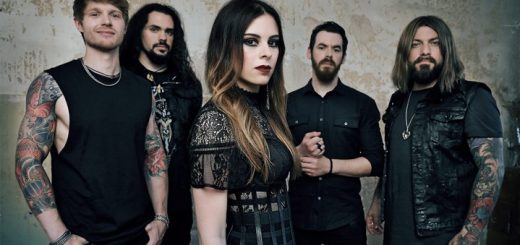
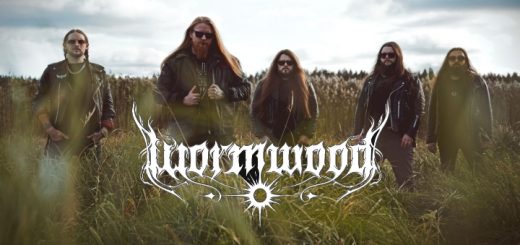
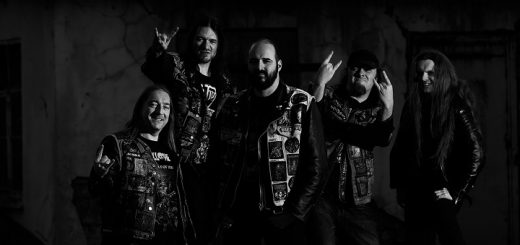
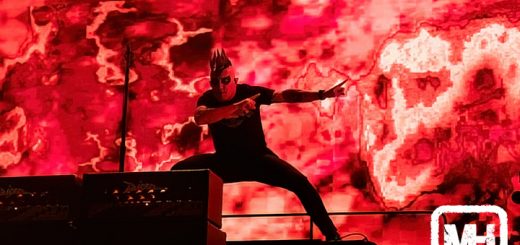
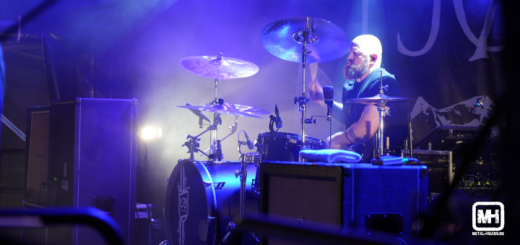
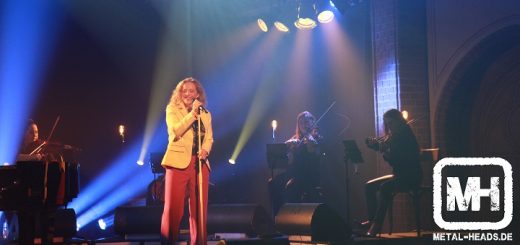
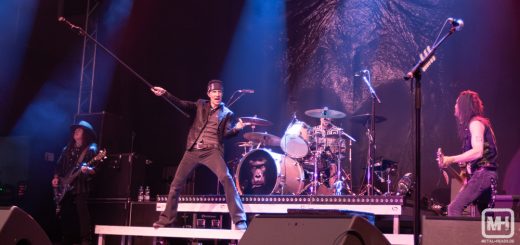
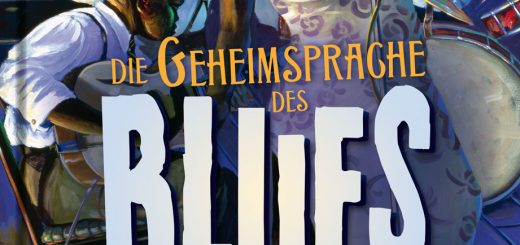
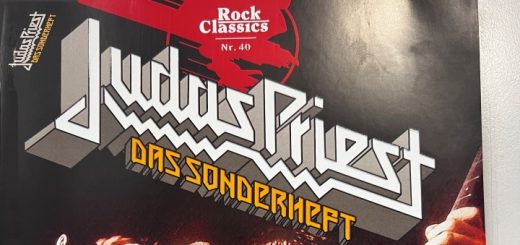
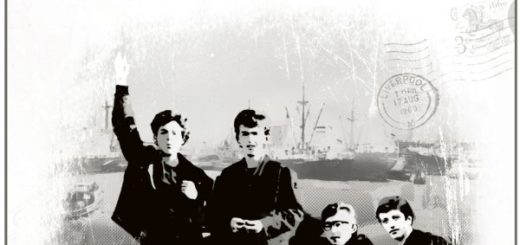
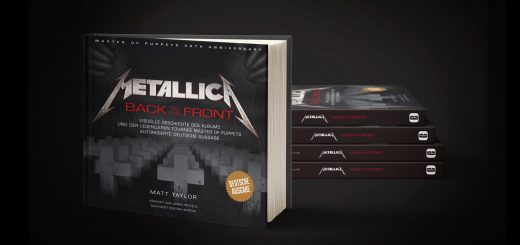
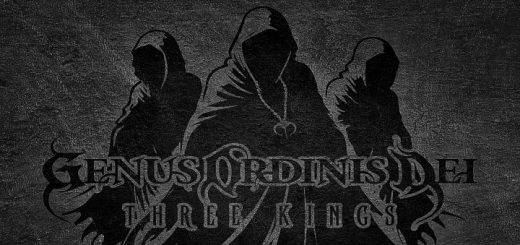
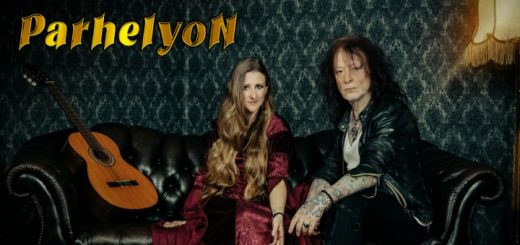
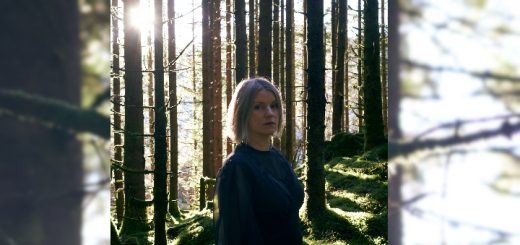
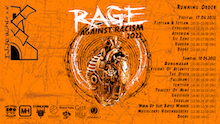










Neueste Kommentare